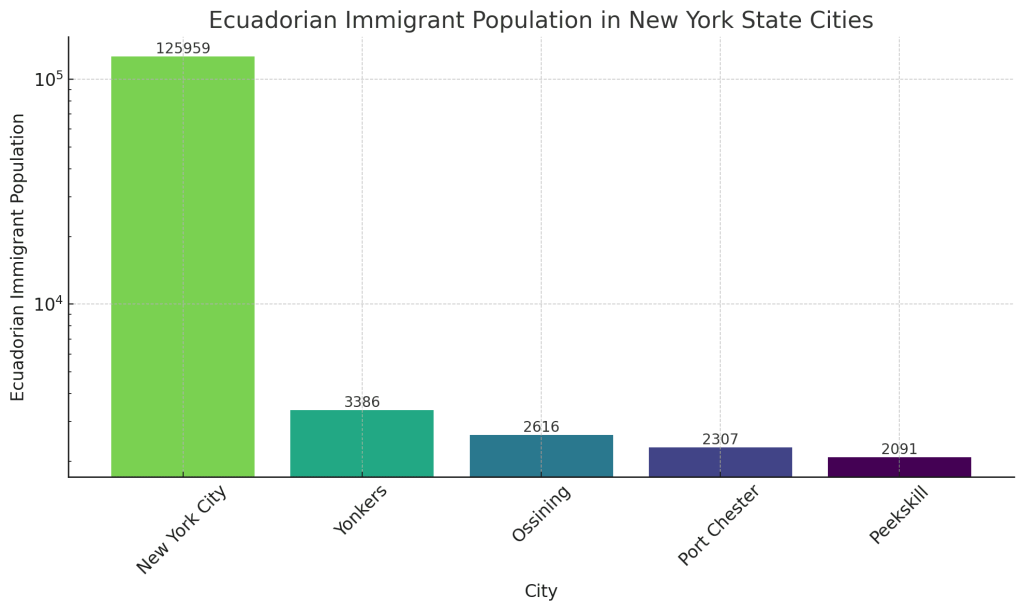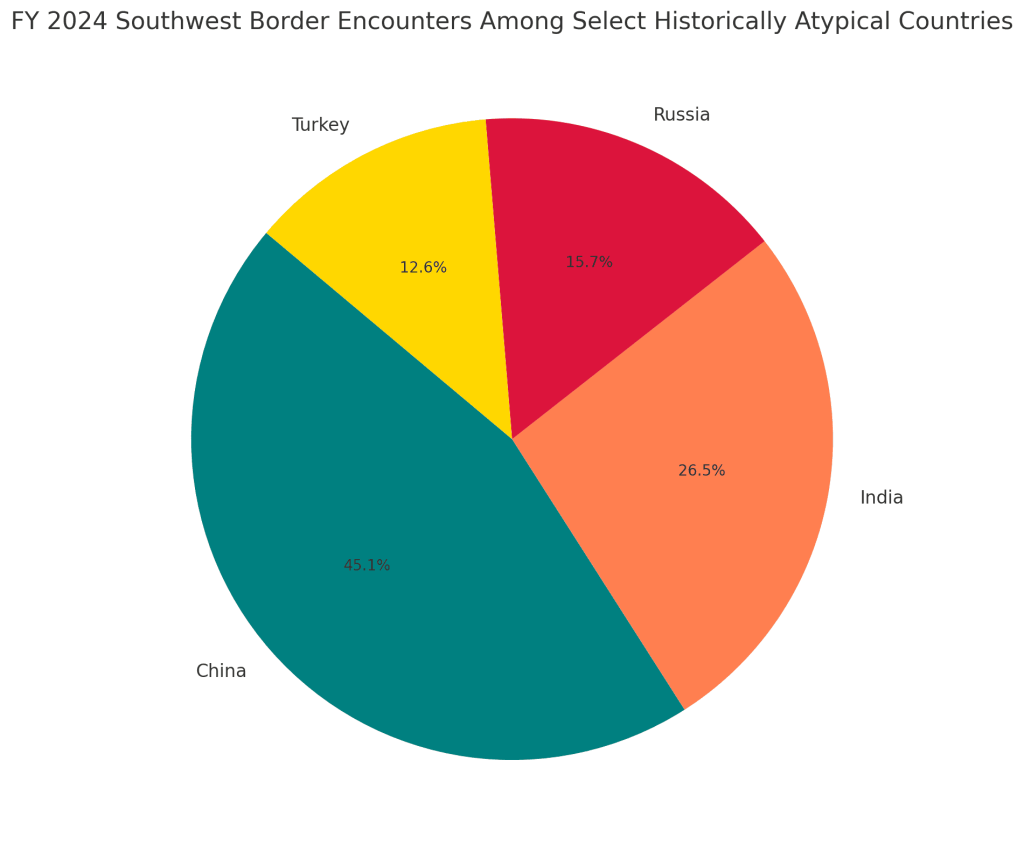What Are the Main Factors Driving Recent Migration Waves to the U.S.?
Migration trends to the United States have seen significant shifts, particularly in recent years. From the 1990s through the late 2010s, a substantial number of migrants from Mexico made their way to the U.S., primarily for economic opportunities. However, around the 2010s, the focus shifted towards the Northern Triangle countries—El Salvador, Guatemala, and Honduras. This period marked a noticeable increase in unaccompanied minors and family units arriving at the border, adding complexity to the existing immigration challenges.

How Have Global Events Influenced Immigration?
Since 2022, political and economic crises have pushed people from Cuba, Nicaragua, and Venezuela to flee their repressive regimes, making them a significant part of irregular migration. According to fiscal year 2024 data, these countries now account for 22% of all encounters at the southern U.S. border. Despite these emerging trends, Mexican nationals remain the largest single group of migrants, underscoring the ongoing significance of Mexico in U.S. immigration discussions.
What Emerging Trends Are Shaping Migration in 2024?
The first quarter of 2024 points to pivotal roles for Ecuador, China, India, and Colombia in shaping future migration patterns. Although these nations have not traditionally dominated headlines regarding migration, their influence is gradually becoming more pronounced:
How Is Ecuador Influencing Current Migration Trends?

Ecuador is increasingly critical, both as a country of origin and a transit country for migrants, with four major contributing factors:
- Surge in Violence and Political Unrest:
In a shocking display of Ecuador’s escalating crime situation, gunmen stormed a TV station in Guayaquil in January, taking several reporters hostage. This incident highlights the severe security issues stemming from the involvement of Mexican cartels, a crumbling security infrastructure, and economic challenges. These factors have led to Ecuador’s murder rate reaching approximately 40 per 100,000 in 2023, according to the highest ever recorded there, prompting a huge 96% increase in Ecuadorian nationals encountered at the U.S. southern border over the last six months of 2023.
- Significant Ecuadorian Diaspora in the U.S.:
Ecuadorians comprise 18% of the recent migrant arrivals in New York City, where large Ecuadorian communities offer social and economic support. This local connection encourages more Ecuadorians to migrate to areas where they have established networks.
-
Home to Venezuelan Migrants:
Approximately 474,000 Venezuelan migrants currently residing in Ecuador are likely to seek new lives in the U.S. or other neighboring countries due to worsening conditions in Ecuador.
-
Gateway for Chinese Migrants:
Ecuador’s unique visa policies for Chinese citizens have made it a starting point for many Chinese migrants aiming for the U.S. However, with increasing scrutiny and restrictions, these routes may become less feasible, potentially reducing irregular migration from China.
What Are the Reasons Behind the Rising Migration from China?

China’s migration trends are shaped by social media influence and internal pressures. Regions facing severe persecution, like Xinjiang and Hong Kong, drive many to flee. Simultaneously, broader economic stagnation and prolonged U.S. visa wait times have made irregular paths more appealing. Social media platforms like Douyin (Chinese TikTok) provide potential migrants detailed guidance on lesser-known routes, such as the dangerous Darién Gap, highlighting the significant role of information in migration decisions.
How Is Indian Migration Unique?
Indian migration to the U.S. has its particularities, primarily influenced by regional issues in the northern states of Haryana and Punjab. Factors such as limited U.S. visa availability, persecution fears under the Hindu-nationalist Bharatiya Janata Party, and soaring land prices enabling financial means to migrate are pivotal. Additionally, Indian nationals face unique challenges, such as the recent U.S. strategy with El Salvador imposing fines on Indian travelers to curb irregular migration, demonstrating targeted financial deterrents as a possible future strategy.
What Role Does Colombia Play in Current Migration Trends?
Colombian migration is substantial yet lesser-discussed. In FY 2023, Colombians made up 6% of all southern border encounters. Political shifts under President Gustavo Petro and escalating security concerns might shape future migration patterns, potentially stressing U.S. immigration systems further.
What Policy Responses Could Address These Trends?
To address these evolving challenges, specific policy recommendations include:
- Designating Ecuador for Temporary Protected Status (TPS) to aid Ecuadorian migrants and alleviate pressures in cities like New York.
- Promoting humanitarian pathways for persecuted Chinese nationals through legislations like the Uyghur Human Rights Protection Act and the Hong Kong Safe Harbor Act.
- Enhancing U.S.-India relations by improving visa processing and intelligence sharing to combat human smuggling.
- Leveraging U.S.-Colombia relations to foster effective migration management and potentially setting an example for regional cooperation.
For further details on managing migration through legal and diplomatic channels, visit the U.S. Citizenship and Immigration Services website.
Conclusion
Recognizing and adapting to small but significant shifts in global migration patterns is crucial. Countries like Ecuador, China, India, and Colombia, although not historically the largest sources of U.S. immigration, present unique challenges that require tailored and proactive policy responses. As the U.S. faces potential political changes, comprehensive and strategic immigration policies are essential to maintain effective border management and uphold international relations.
Learn Today:
1. Migration Waves:
Definition: Periods characterized by a notable influx of migrants from specific regions or countries to another, driven by various factors such as economic opportunities, political instability, or social unrest.
2. Unaccompanied Minors:
Definition: Children who arrive at a foreign country’s border without a parent or legal guardian and seek asylum or protection, often facing unique challenges and requiring specific care and legal considerations.
3. Temporary Protected Status (TPS):
Definition: A specific immigration status granted to eligible foreign nationals from designated countries facing temporary unstable conditions, such as armed conflict or environmental disasters, allowing them to reside and work legally in the United States until conditions improve in their home countries.
4. Fiscal Year (FY):
Definition: The accounting period used by the U.S. government for budgeting and reporting purposes, starting on October 1st of one year and ending on September 30th of the following year, commonly referenced when discussing statistical data and trends related to immigration.
5. Human Smuggling:
Definition: The criminal act of facilitating illegal entry and transportation of individuals across borders without proper documentation or authorization, often involving the exploitation and endangerment of migrants for financial gain, distinct from human trafficking which involves exploitation for forced labor or other nefarious purposes.
This Article In A Nutshell:
Migration to the U.S. is evolving. Mexican migrants seeking work have been joined by those fleeing violence in Northern Triangle countries. Recently, Cubans, Nicaraguans, and Venezuelans also seek refuge. Ecuador, China, India, and Colombia are shaping future migration trends. Heightened attention and tailored policies are crucial to managing these evolving patterns successfully.
— By VisaVerge.com













